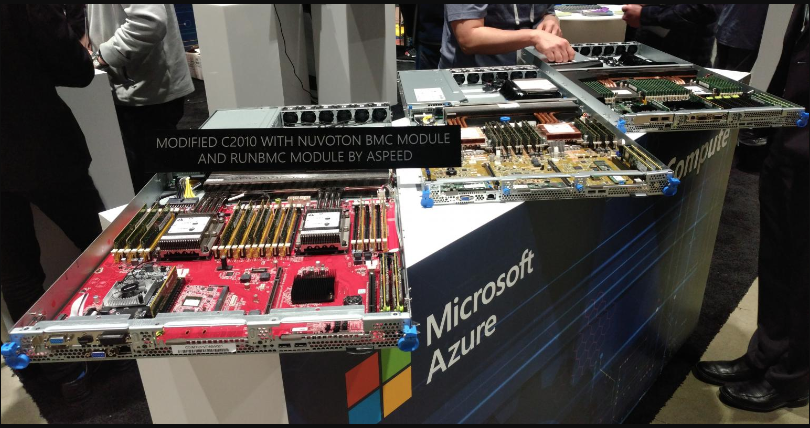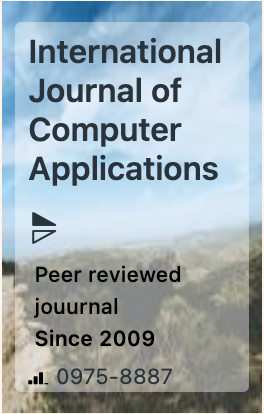The week's pick
Random Articles
Reseach Article
Temporal-Spatial Deep Learning Framework for Real-Time Intrusion Detection in Cloud Environments
| International Journal of Computer Applications |
| Foundation of Computer Science (FCS), NY, USA |
| Volume 187 - Number 19 |
| Year of Publication: 2025 |
| Authors: Neethu B., Sheena Mathew |
 10.5120/ijca2025925288
10.5120/ijca2025925288
|
Neethu B., Sheena Mathew . Temporal-Spatial Deep Learning Framework for Real-Time Intrusion Detection in Cloud Environments. International Journal of Computer Applications. 187, 19 ( Jul 2025), 38-42. DOI=10.5120/ijca2025925288
Abstract
With the rapid advancement of cloud computing, security breaches and intrusion attempts have become increasingly sophisticated and real-time. Traditional intrusion detection systems often fall short in identifying and detecting the evolving threats within dynamic cloud environments because they lack adaptability and struggle with effective feature representation. To address this, this paper proposes a new Temporal-Spatial Deep Learning (TSDL) framework that combines Convolutional Neural Networks (CNNs) for capturing spatial features with Long Short-Term Memory (LSTM) networks to learn temporal patterns in cloud network traffic. The proposed model pre-processes sequential packet data while keeping track of data flow, which enables early and accurate intrusion detection of the system. The system is evaluated on benchmark datasets such as CICIDS2017 and UNSW-NB15, and it outperforms traditional machine learning models and regular deep learning networks in both detection accuracy and processing latency. This system is designed to operate in real-time, making it suitable for deployment in large-scale cloud infrastructures.
References
- N. Moustafa and J. Slay, “UNSW-NB15: A Comprehensive Data Set for Network Intrusion Detection Systems (UNSW-NB15 Network Data Set),” in 2015 Military Communications and Information Systems Conference (MilCIS), Canberra, Australia, 2015, pp. 1–6. doi: 10.1109/MilCIS.2015.7348942.
- I. Sharafaldin, A. Habibi Lashkari, and A. Ghorbani, “Toward Generating a New Intrusion Detection Dataset and Intrusion Traffic Characterization,” in Proceedings of the 4th International Conference on Information Systems Security and Privacy (ICISSP 2018), Funchal, Madeira, Portugal, 2018, pp. 108–116. doi: 10.5220/0006639801080116.
- G. Kim, S. Lee, and S. Kim, “A novel hybrid intrusion detection method integrating anomaly detection with misuse detection,” Journal or Conference Name, 2014. [If known, insert journal name, volume, issue, pages, and DOI.]
- Goodfellow, I., Bengio, Y., & Courville, A. (2016). Deep Learning. MIT Press.Thesis. UMI Order Number: UMI Order No. GAX95-09398., University of Washington
- G. Forman, “An extensive empirical study of feature selection metrics for text classification,” Journal of Machine Learning Research, vol. 3, pp. 1289–1305, Mar. 2003.
- L. D. Brown, H. Hua, and C. Gao, “A widget framework for augmented interaction in SCAPE,” Conference Name, 2003.
- Y. T. Yu and M. F. Lau, “A comparison of MC/DC, MUMCUT and several other coverage criteria for logical decisions,” Journal of Systems and Software, vol., 2005.
- H. Lv and Y. Ding, “A hybrid intrusion detection system with K-means and CNN+LSTM,” EAI Endorsed Transactions on Scalable Information Systems, , 2024
- A. Gueriani, H. Kheddar, and A. C. Mazari, “Enhancing IoT Security with CNN and LSTM-Based Intrusion Detection Systems,” arXiv preprint, arXiv:2405.18624, 2024.
- R. H. Altaie and H. K. Hoomod, “An Intrusion Detection System using a Hybrid Lightweight Deep Learning Algorithm,” Engineering, Technology & Applied Science Research, vol. 14, no. 5, pp. 16740–16743, 2024.
- M. Jouhari and M. Guizani, “Lightweight CNN-BiLSTM based Intrusion Detection Systems for Resource-Constrained IoT Devices,” arXiv preprint, arXiv:2406.02768, 2024.
- D. Srilatha and N. Thillaiarasu, “LSTM-CNN: a deep learning model for network intrusion detection in cloud infrastructures,” International Journal of Critical Infrastructures, vol. 20, no. 4, pp. 505–523, 2024.
- W. H. Aljuaid and S. S. Alshamrani, “A Deep Learning Approach for Intrusion Detection Systems in Cloud Computing Environments,” Applied Sciences, vol. 14, no. 13, art. no. 5381, 2024.
- J. M. Ismaila and V. Z. Sabo, “Anomaly Detection Via Network Intrusion Using A Hybrid CNN And LSTM,” International Journal of Emerging Multidisciplinaries: Computer Science & Artificial Intelligence, vol. 4, no. 1, pp. 25–, 2025.
- H. C. Altunay and Z. Albayrak, “A hybrid CNN + LSTM-based intrusion detection system for industrial IoT networks,” Engineering Science and Technology, an International Journal, vol. 38, art. no. 101322, 2023.
Index Terms
Keywords

